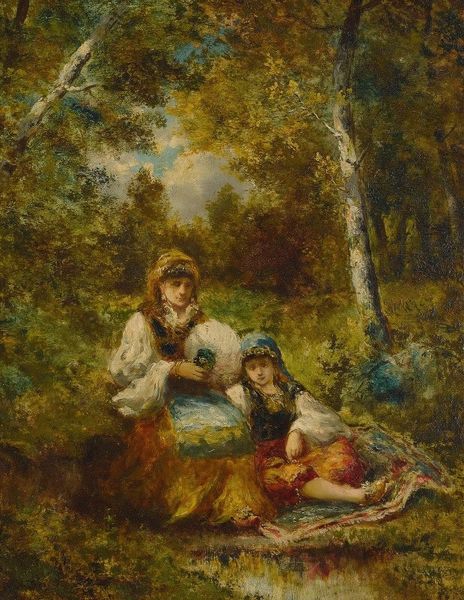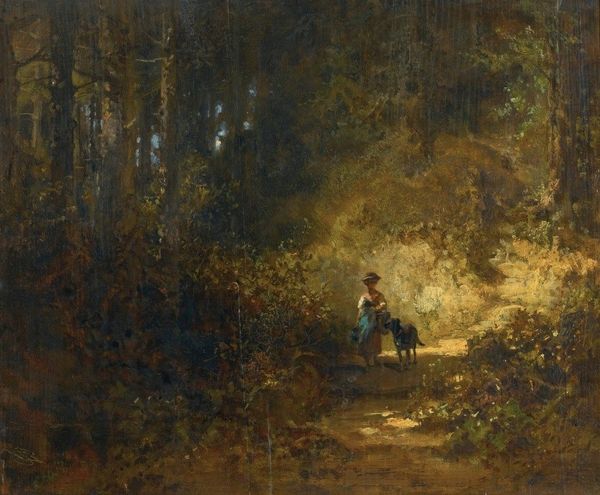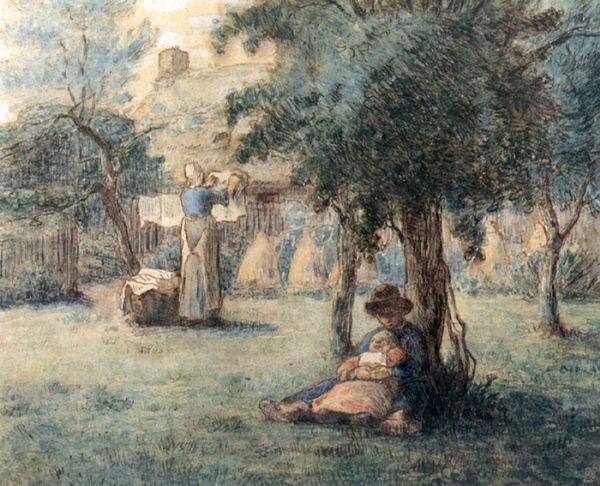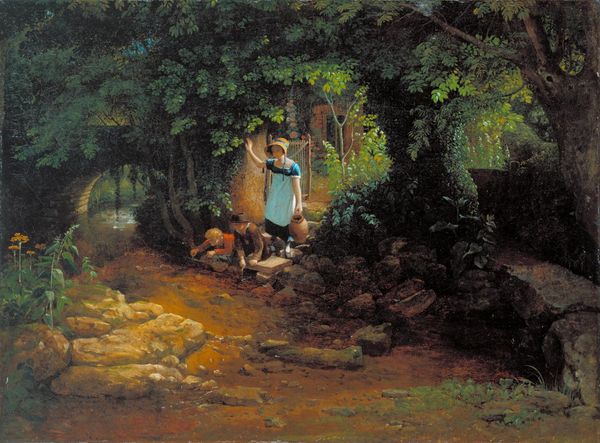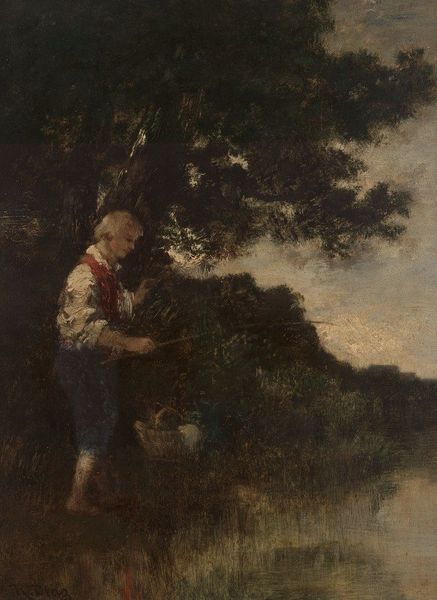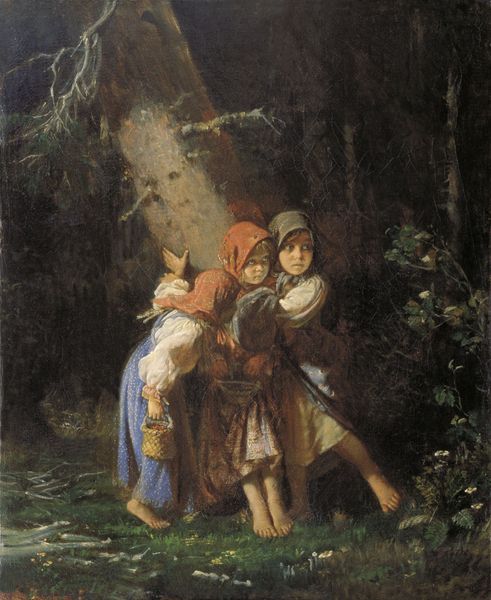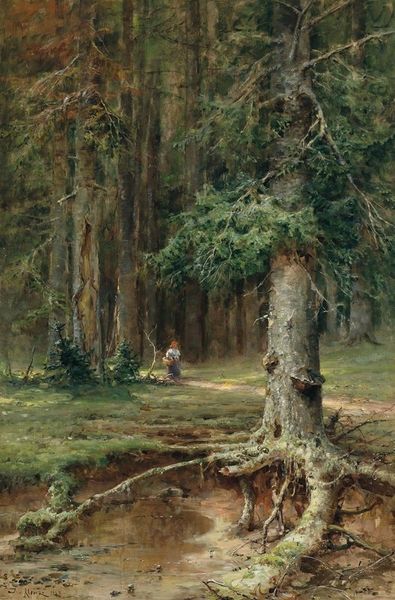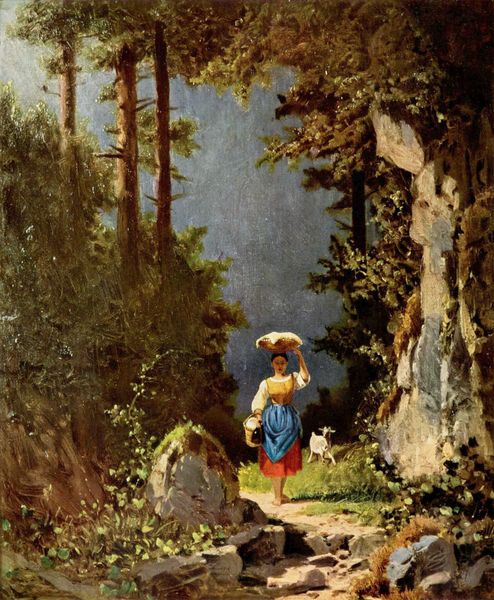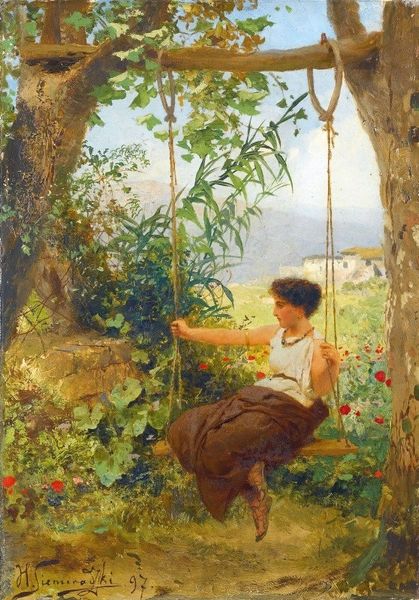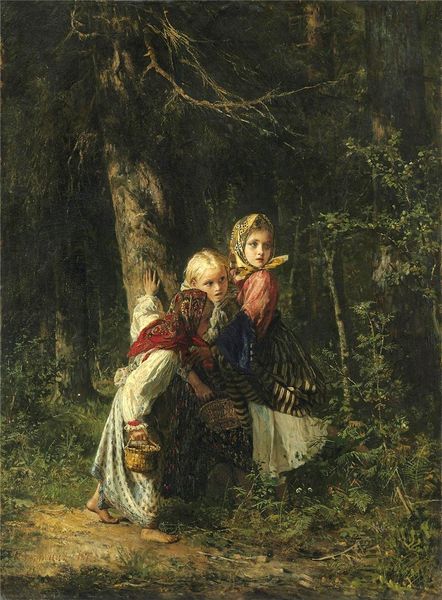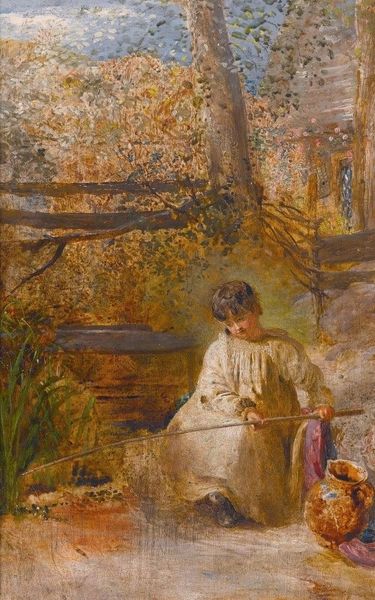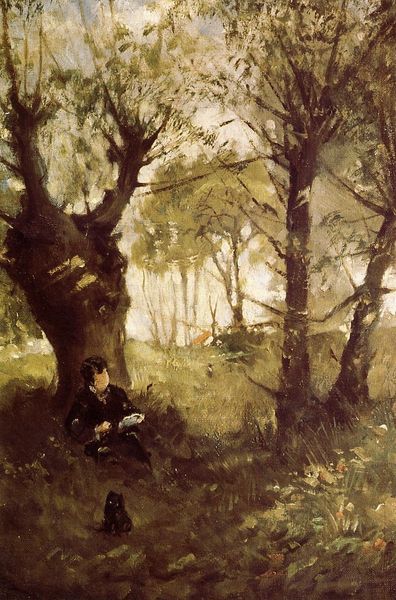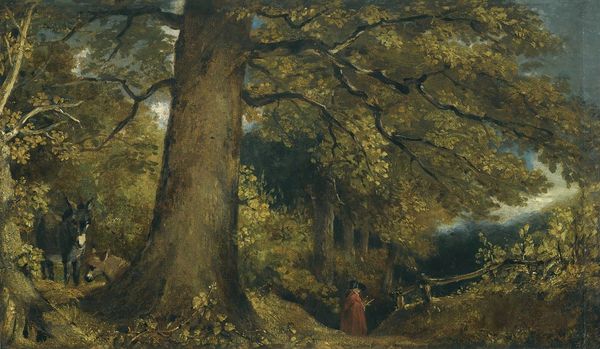
Copyright: Public Domain: Artvee
Curator: Welcome. Here we see Hans Thoma’s oil painting, "The Bee Friend," created in 1863. It’s a genre scene, capturing a young boy sitting near a beehive. Editor: It's quite charming. The composition feels very grounded with the earthy tones, and the way the light filters through the trees gives it a peaceful, almost melancholic atmosphere. Curator: The setting certainly speaks to the Romantic era’s fascination with nature. Thoma, influenced by the socio-political currents of his time, presents us with an idealized, almost sentimental, view of rural life. Notice how this simplicity is elevated, contrasting the growing industrialization around him. Editor: Absolutely. And how the texture contributes! Look at the impasto in the foliage; the strokes create a palpable sense of density and the rough bark. This highlights the natural, untouched beauty contrasting with any artifice. The muted color palette heightens the quiet intimacy. Curator: The placement of the boy is no accident. Consider how childhood itself was evolving into this specific socio-cultural ideal of innocence. In 19th century art, children start taking on bigger roles. What does it mean that his gaze points away to the distance instead of towards the hive? Editor: Intriguing. Formally, the diagonal created by his line of sight pulls us towards the horizon, adding depth. But there's also something unresolved in his pose; he’s present, but somewhat disconnected. Perhaps the symbolism of the beehive relates to labor or some idea of productivity, though. Curator: The artwork does appear to resonate with its time while commenting on larger ideals. Editor: A successful capturing of transient calm, making it a rich visual experience. Curator: Indeed, art from the time provides enduring glimpses into both the social landscape and what artists consider timeless about humanity and the natural world.
Comments
No comments
Be the first to comment and join the conversation on the ultimate creative platform.
